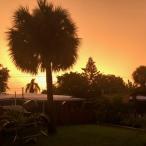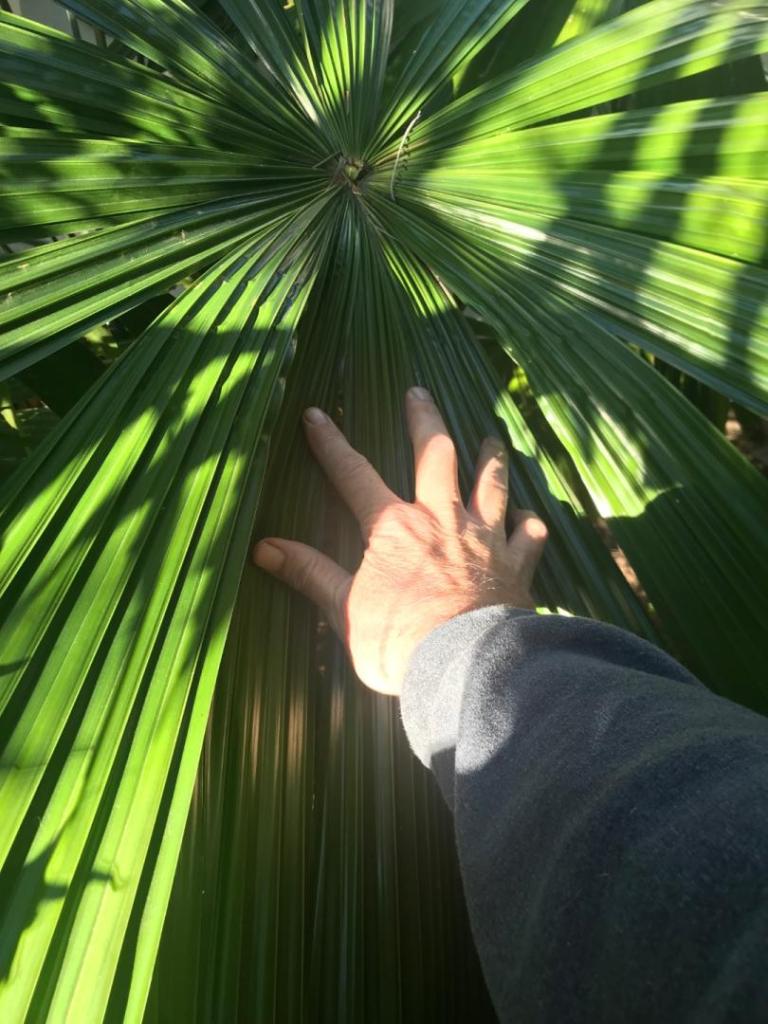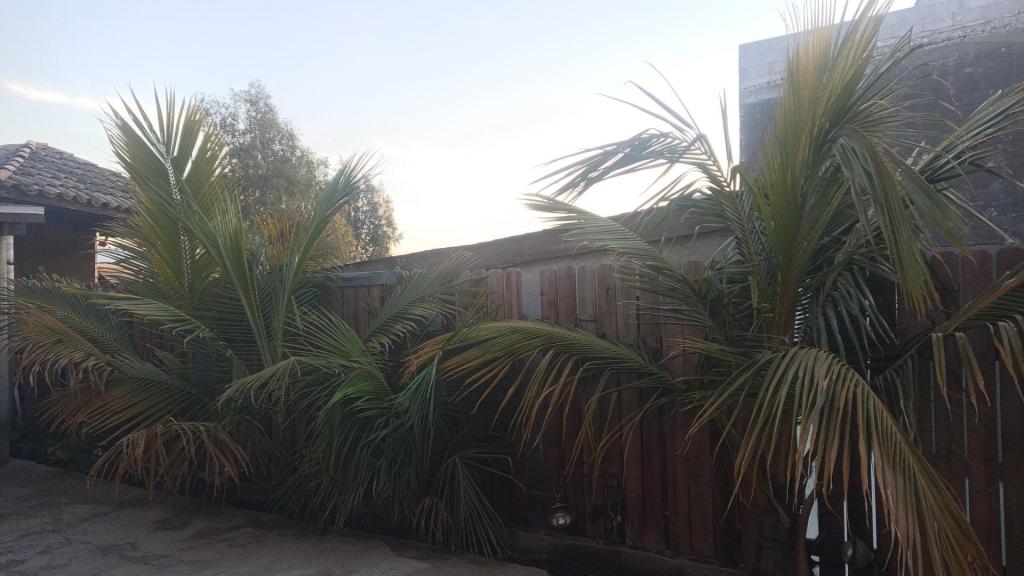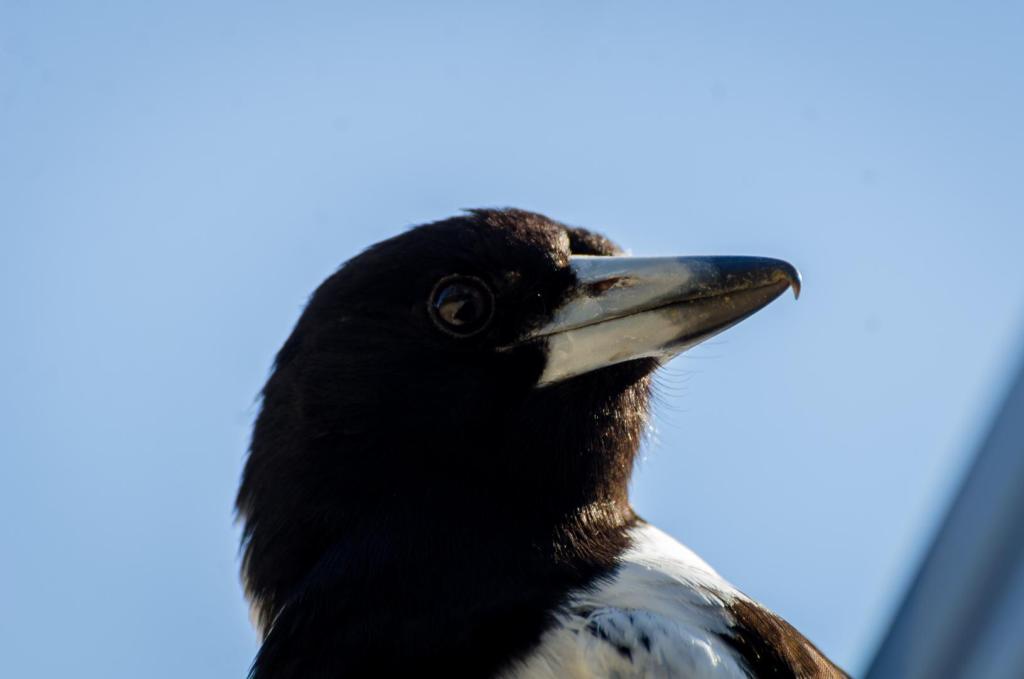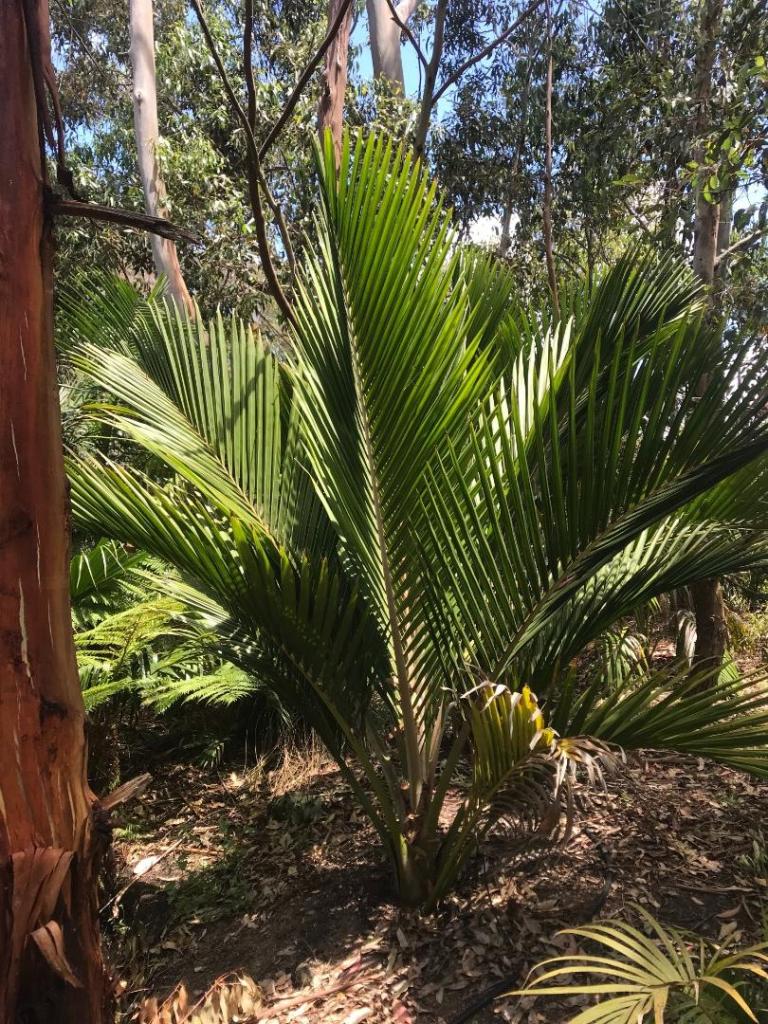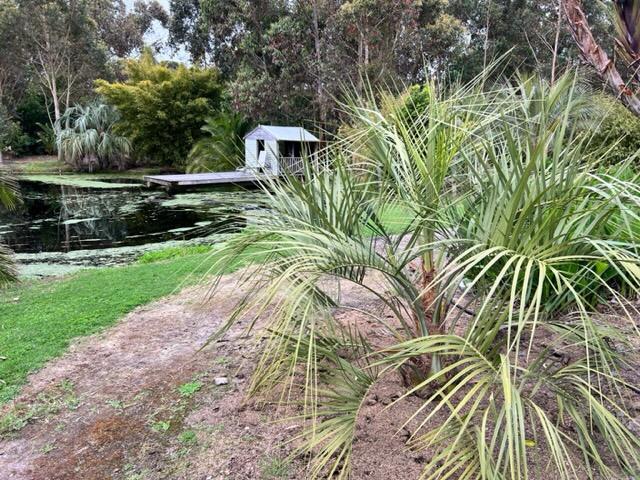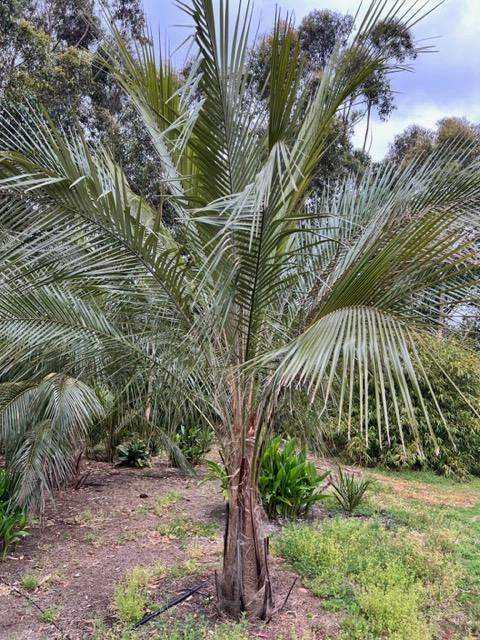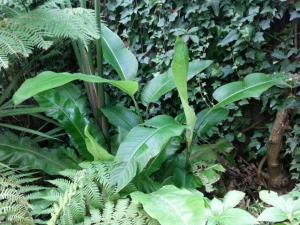Leaderboard
Popular Content
Showing content with the highest reputation on 01/27/2023 in all areas
-
100%!! I'm so sick of hearing about those Bulgarian Trachys. FYI they all died - not so hardy after all.4 points
-
Those bulgarian fortunei are just as hardy as a "normal" ones.....just some sale trick......about takil....from what I have seen so far serious leafdamage starts at around -10°C...much less hardy then fortunei!4 points
-
I’ve protected mine here in maine, because I’m zone 6b usually but some winters I’m zone 7. It’s survived the last four winters from temps down to -5 outside the green house and inside it was still 2 degrees f. No troubles or loss of fronds. The sabal minor I added that was unprotected last winter made it thru with frond damage but regrew last summer with a few surviving fronds. I hope that after many winters with allowing some extremes and then protecting the palm it will slowly become more hardy and also endure the cold moisture we have here but it hasn’t seemed to be bothered by the cold air (I open it up after most storms so one side is exposed to the elements. december 2019 may 2020 January 2023 sabal minor4 points
-
4 points
-
I've tried this Pouteria in the Keys and didn't care for it...tasted like a pasty, chalky hard-boiled-egg-yolk. But I'm assuming there are "good" and "bad" versions, just as with sapodilla, which can be highly grainy to almost smooth in texture. Pouteria is in the Sapotaceae, kin to the Mamey Sapote and it make sense what others have said above, for a good cultivar, prepared in ice cream, etc. When I first tried Mamey (I had never seen it before I moved to the Keys) I thought the same thing as I did with that eggy Pouteria...but this time, pumpkin! (and it is an excellent pumpkin substitute). But I started using it in smoothies and found myself suddenly a fan of it. So you never know with some of these unusual tropical fruits...but I do think that Pouteria is a very pretty tree.3 points
-
A video from yesterday from the rainforest area. 93CC50CA-217A-47D8-9A8E-A37E0A2A9F6D.MOV3 points
-
Nice find. It is also known as Eggfruit, as the fresh pulp will kinda resemble scrambled eggs in texture. The fruit on the tree in the photo are still undersized. They could/should reach baseball or softball size. As @gurugumentioned above, it is a tasty, creamy fruit. It is different if you are not used to it, like a very sweet, whipped yam. I have tried the fruit in milkshakes and it is excellent. Some of the recipes were made with vanilla ice cream or just milk, others with a touch of cinnamon. I am sure other variations exist. I haven't found the fruit in other confections or baked goods as of yet, but I would try them if I could. Like most species in Pouteria, the trees can become massive overtime, but a trimmed specimen kept at 15 ft. by 15 ft. (4.5m) will provide a ton of fruit. There are many trees in tropical fruit collections around S. Florida. A former coworker of mine would bring me fruit from her tree regularly. Harvested fruit ripen very fast and are better if taken from branch instead of off the ground. There are hints of different cultivars out there but I have not seen them in person. Small plants show up regularly at fruit tree sales and sometimes at other plant events. Many of them are grown from seed, but others may be grafted to either get a 'faster fruiting tree' or to preserve a unique healthy, large fruiting, tasty specimen. Ryan3 points
-
From https://en.wikipedia.org/wiki/Fertilizer NPK rating is a rating system describing the amount of nitrogen, phosphorus, and potassium in a fertilizer. NPK ratings consist of three numbers separated by dashes (e.g., 10-10-10 or 16-4-8) describing the chemical content of fertilizers.[22][23] The first number represents the percentage of nitrogen in the product; the second number, P2O5; the third, K2O. Fertilizers do not actually contain P2O5 or K2O, but the system is a conventional shorthand for the amount of the phosphorus (P) or potassium (K) in a fertilizer. A 50-pound (23 kg) bag of fertilizer labeled 16-4-8 contains 8 lb (3.6 kg) of nitrogen (16% of the 50 pounds), an amount of phosphorus equivalent to that in 2 pounds of P2O5 (4% of 50 pounds), and 4 pounds of K2O (8% of 50 pounds). Most fertilizers are labeled according to this N-P-K convention, although Australian convention, following an N-P-K-S system, adds a fourth number for sulfur, and uses elemental values for all values including P and K.[24] So if you have a 50 lb. bag of 6-2-4 & I add another 50 lb bag of 8-5-8, in a 50/50 basis it would be (3 lbs N, 1 lbs P, 2 lbs K) + (4 lbs N, 2.5 lbs P, 4 lbs K) or total of 7 lbs N, 3.5 lbs P, 6 lbs K in 100 lbs (two 50 lb. bags). Adding the two different bags completely together would then ben a 7 - 3.5 - 6 NPK fertilizer. If you add other fertilizers or compounds just keep tally of the weight of each item added and the weight of the components and then divide by total weight of final product. If you want to boost one compound above the others be sure to compensate down the reduction of the others respectfully.3 points
-
3 points
-
3 points
-
I found these South African seeds in the back of my frig in a jar. They're several years old, so I'll try to germinate them this spring. They're a cross between Strelitza juncea and the yellow flower form of Strelitzia reginae (aka "Mandela's Gold"). Not sure anyone is doing this cross anymore, at least not in the States? In my previous attempt at sprouting, I only got one to grow (pictured). Maybe this one will bloom this year? 🤞 This may have been one of the last crosses the Saunders made before they died: https://www.theguardian.com/world/2018/jun/15/british-botanist-rachel-saunders-body-south-africa2 points
-
That is a common trait of some of the extremely and super rare palm species that have made it to cultivation. They were often containerized specimens and died after an average or severe cold snap while unprotected; either without knowing cold sensitivity or were being experimented upon with purpose. Then, seed or seedlings are not offered again or not for a long while, so the palm becomes absent or scarce at sales, in collections, etc. Manicaria saccifera* was one example mentioned above. Others that come to mind include Sommieria leucophylla and its two former species and especially Dransfieldia micrantha... a seriously cold sensitive species. The few plants I knew of outside of Fairchild's Rare Plant house died during the 2009 - 2010 cold blasts. The Pigafetta species were a fun and crazy palm subject during the 1990s S. Fl. palm world. Pigafetta filaris and its rarer cousin P. elata, were cultivated by many growers due to ample supply and their incredibly fast rate of growth. They were basically... weeds. Some knew of their cold sensitivity, others did not. It was this constant back and forth of, here is this really cool-looking palm that is super fast growing (but) is 'probably' cold sensitive. Over the years people tried it with success, others did not, people claimed one species was 'more cold tolerant than the other, and so on. In the later years, after losses began to be more well-known, plants appeared at big auction events. The name would be announced and the crowd would mutter sighs, 'ughs' and 'hmmphs'. Eventually many people stopped wanting it, so it was not grown as much and the desire fizzled out. Would collectors in S. Florida keep trying the genus? Probably, if they are palm nuts, myself included. Some continue to claim the species are more sub-tropical than tropical. If that were true, I would have a 40 to 50 ft. (12-15m) tall Pigafetta filaris in my yard. As others would have as well. *note - A couple years after the 2010 cold, I did see a specimen of Manicaria saccifera growing in a collection that was planted at the edge of a canal. It was a 7 gallon-sized plant and I haven't seen it since. It was alive but in rough shape and I'd have to guess 80% chance it did not make it. Ryan2 points
-
I think if it’s that skinny it’s best to remove it. If I does recover and it could it could fall over from its own weight as it gets larger. I’ve had it happen where it recovered but was unstable so I removed it.2 points
-
Yes, the gender of P. canariensis can be determined by appearance of the foliage, Unfortunately I cannot remember the relevant details ! ( It's weird being the same age as old people )2 points
-
For some additional information from the City of Lakeland: https://www.lakelandgov.net/events/plantae-palooza-garden-festival-plant-sale/ The Central Florida Palm and Cycad Society is slated to have a booth at this sale.2 points
-
I would definitely give it a go, mine have surprised me. I'll have to post a pic of the worst looking one however to show how differently they may react to cold temps. My worst looking one is almost completely burnt and it also happens to look the most like a queen so that probably plays into it. The 2 I posted above are pretty exposed, i think they just have good genetics. Yea i wanted to create a tropical feel that wrapped around my patio, been almost 4 years since I started. So far I'm pretty happy with how it's all coming together. I took that pic last week after we had a good bit of warm weather (high 60s, low 70s). They all have a good bit of size to them so they really don't seem to mind wet cold that much. The very first one I planted had partial spear pull its first two winters in the ground tho. When they're small they need help at times2 points
-
2 points
-
2 points
-
That’s some nice warm weather. I think the tropics have sort of warped to the south a bit more than usual in the sw pacific region. The 10 day accumulated rainfall totals in the north island look sort of monsoonal with the Auckland area expecting about 130mm of rain. Over here in southern WA it’s our dry, but irrigation fixes that.2 points
-
My thanks to those of you who have visited our Nursery and made comments here. We have been in business for 42 years, presently located in Encinitas, CA. We grow about 1600 species of palms, cycads and tropical plants. We do mail orders within the U.S. only. We invite all to drop in and visit the Nursery. You may also check out our extensive website. We are located at 450 Ocean View Ave in Encinitas, 92024. Phone 619 291 4605 Website: www.junglemusic.net Phil Bergman Jungle Music2 points
-
Hey, who dat? That is my man Tracy..... we took the photo just for you Dave. Hilo Jason brought Tracy and his wife Dana over for a tour of my garden on Sunday, we had a great time talking palms and plants. It was a highlight of my week, maybe the month. Anyhow, glad to see these Licuala growing so well in SoCal, they are nice palms at any size. Tim2 points
-
2 points
-
My mule got very big fast. However now that it is mature, it blooms nearly non-stop and the amount of fronds it puts out every year has vastly slowed. It went from pretty easy to protect, to nearly impossible (without risking life and limb). Last winter it had greater than 50% foliar damage from the ice storm and low of 18 or 19. Took all summer to look OK, and I was hoping it would not get damaged this winter.... The Christmas freeze this year, with a low of 18, resulted in around 50% foliar damage again. So will look like junk this year too. I don't know how many consecutive years it can take getting partially defoliated before it doesn't have the energy to recover. I'm hoping we get a string of winters without temps to damage it so it can at least look a little better. I know it is a matter of time before there is a cold event that outright kills it. I'm thinking if/when there is a major event forecast to go below 15, I'm going to pre-emptively cut all the fronds off and deal with protecting a "telephone pole". With the mature growth rate I'm seeing now, It seems like it would take 2-3 years to re-grow a decently full crown. You might get lucky and get a mule that doesn't show foliar damage until lower temps, but that is just a roll of the dice. Early protection in 2015-16 when it was a few years old from a strap leaf. 2017, getting harder to protect. 2021... my sad attempt at protecting the trunk pre ice storm. It's looking pretty sad right now, but alive.... I supposed I should snap a photo to update.2 points
-
A friend shared this photo and several other astonishing photos of storm effects on trees in Sacramento, a city proud of its urban forest which includes many trees aged 100 - 300 years old. The way these palms snapped off is pretty shocking, but imagining the weight of those crowns pushed by high winds... wow! Northern California is getting hit hard.1 point
-
1 point
-
I have a seed sourced bulgaria that had the fronds fried at the tips where they stuck above the protection inside covered protection at -1F. In other words the frond would have been toast at temps well above -1F probably 5F or more.1 point
-
California Dutchman's Pipe (Aristolochia californica) is a native and not as showy as the more tropical species. It's the main food source for pipevine swallowtail butterflies (Battus philenor) larvae: https://baynature.org/article/dutchmans-pipe-is-the-only-pipevine-native-to-california/ The flowers of this vine 'enlist' flies in their pollination process. This plant took three years to get established and start blooming. It's growing in my backyard on the stems of a Tecoma, which shades it from hot summer sun. No sign yet of pipevine swallowtails, but I remain hopeful!🙂1 point
-
Yess, but don't expect miracles...maybe you will gain a degrees or 2 more at most and even then, among those offsprings, a lot of them will also have the genes to show less hardiness. It is a very long and slow process I believe to eventually get one who shows a stable differance in hardiness. It makes me kind of think where the heck T. fortunei originated from originally.1 point
-
Thanks for help. I may just start with a new healthy palm. I have this palm in the garage under grow lights just until spring. It's interesting that the other king palm I put in my yard has done much better than this one despite a little cold damage. Unfortunately my yard gets almost no shade in the summer and with the multiple +100 degree days so fingers crossed it will survive with plenty of water and proper fertilizer.1 point
-
You have quite a good microclimate being on a peninsula. I agree that you should plant the palms and trees you intend to use as canopy first. Since you have sandy soil it might be worth adding in loads of mulch and over the years you can add more and more to improve the soil. I would add royal palms as a large trunking stand out palm, queen palms also grow pretty fast and have a good sized canopy. You could add in phoenix canariensis and Washingtonia robusta and filifera but they are probably already very common in the area. I would go for phoenix dactylifera (the true date palm), phoenix theophrasti, phoenix rupicola, phoenix Sylvesteris, phoenix reclinata, phoenix roebelenii and phoenix loureiroi. Bismarckia would also made a nice stand out palm.Chrysalidocarpus decaryi, ambositrae, baronii, onilahensis should be fine there. Some of the arenga palms will probably do well there. For understory palms I'd use the chamedorea genus.Cryosophila warscewiczii, chambeyronia macrocarpa, chambeyronia oliviformis, Chambeyronia lepidota and Wallichia as some nice rarer palms. I'd also go with the whole archontophoenix genus, some big archontophoenix Alexandrae in full sun and under a light canopy archontophoenix cunninghamiana, myolensis, purperea, Maxima and tuckeri. When the canopy has really grown in you might be able to grow Rhopalostylis sapida and Rhopalostylis baueri in lots of shade. Livistona should do pretty well there too and sabals.Acoelorraphe wrigthii and Allagoptera I think will be fine. Howea belmoreana and howea forsteriana need to be in the shade I'd also put those under denser pat's of the canopy. If you want a coconut look a like since Cocos nucifera won't grow there try Beccariophoenix alfredii or Jubaeopsis caffra. Since you have sandy soil I'd try and take advantage of that and have a large arid section with dessert plants such as aloes, cacti agaves, yuccas and arid shrubs. I would then have a Mediterranean area full of Mediterranean plants lots of flowers ect and maybe a few palms too. Finally for the largest section I'd have a full sun tropical biome area full of palms and exotics and then a shaded section at the back with the same things but can't handle full sun such as bromeliads, monstera deliciosa, colocasias, caladiums, chamedorea ect. Trees such as eucalyptus, jacaranda mimosifolia, Delonix regia and Araucaria heterophylla would do well there. The arid and Mediterranean sections would reduce watering so you can make sure the ones in the tropical style section get plenty of water. Bougainvillea is also something I'd recommend growing there. Of course there's plenty more things you could do but those are just a few ideas. @Phoenikakiasprobably knows more about what palms and plants would do well in you're climate.1 point
-
Trachys, even from the same cultivar, don't all have the exact same hardiness. Like people they have slightly different genetics. Since those Bulgarian ones descend from known extreme cold survivors there could be some genetic truth to it.1 point
-
It was about a foot tall, just starting to trunk. Less than 2" snow. Also have a med palm that survived, although it did lose 1 trunk. No coverings. I did not expect any survivors, areawide. But other survivors exist, unprotected from the same event. In fact I watched 3 survive a colder event in the late 1970's.1 point
-
1 point
-
Similar here the airports are the coldest and the near by wunderground stations are significantly warmer and where I am is in a better microclimate than the nearby wunderground stations so it's even warmer here. In my garden there's multiple good sized patios, a good sized pond and tree canopy in parts of it so it tend to be as mild as parts of London such as Chelsea near the Thames. My weather station isn't near the house pond or patios though and in the coldest part of the garden so whilst I record 28f in December other parts of the garden were at least 1-2f warmer. I'm also not that far from the Thames though either. It's currently 5c here at 3.21am. The stratospheric warming isn't supposed to cause cold temperatures here luckily in February. It should be around average with north westerly winds. It also looks fairly dry too. Will be interesting to see how dry this spring is and how dry the summer ends up being. We are predicted to have the same climate as Barcelona in the future and be csa. I can see why Barcelona was chosen at least for the summer comparison because like London Barcelona is drier in the summer than the rest of the year but can still receive some rainfall just a lot less than other months. The wettest period is also Sep-Nov in Barcelona like here. I recommend the Davis weather stations because that way without a doubt no one can argue that it's inaccurate and you're weather station is just less accurate than the "official" ones. They are also really good quality. If you don't want to spend that much money though the ambient weather stations are supposed to be pretty good.1 point
-
4°C at 2:30 a.m.. It's getting milder but it's quite misty out. Currently I'm monitoring how temperatures differ all around my garden and also at different heights. Usually it's at least 1 to 5°C warmer in my garden than at the official weather station, which is located at the airport. Outside of the UHI and in a cold spot in the North of the city. While I live in the densely populated outskirts of the South of my city. The average difference of temperature is around 2-3°C. Other than my own standard thermometer in the garden I observe a private weather station which is the closest reliable (not to close to any building) one next to my place. Even there it seems to be at least somewhat colder than in my garden. Last night we had some light frost with a low of almost -2°C at the official weather station and -1.3°C at the private one. Today I went to check out the lows I measured for last night and I couldn't believe how much warmer it's been in my garden compared to everything else. I measured -0.2°C on THE GROUND in the middle of my garden. And a low of 4.2°C! just a little bit higher up on small hill I made under the canopy of a Eucalyptus (it was misty and cloudy so no radiation anyway) also in the middle of the garden. I got outside to check if everything is alright and nothing was wrong, everything was working fine while I also noticed that every thermometer I have running right now was at that moment above 5°C while at the weather station the temperature was at 1°C and at the private one nearby slightly above 2°C. I've measured huge differences before and I know from former cold blasts that it never gets as cold here as it does at the airport but at least from what I've measured I don't think I've ever had a difference above 6°C. I might get a better weather station and many sensors to monitor every corner long term. Really makes me think what a microclimate can do!1 point
-
Thanks Dave. I'm getting there. Status quo regarding the rodent damage on the oldest coco. It's pushing out a new spear.1 point
-
I have a few in pots, one is an over grown 7 gallon that will need an in ground home soon. With its thick leathery leaves it seems like it would do well indoors but I have no experience to back that up. A large one would be neat looking in the right space thats for sure. For me they have been very easy to grow, in pots at least, not picky at all. Pests don't seem to be very attractive to them either which is a plus. Good luck!1 point
-
1 point
-
I would put down 4-5" thick mulch around the roots(2-3' radius) just prior to each winter. This will help keep the roots warmer and give them extra cold resistance. Recovery from cold shock each winter will be faster. These palms dont like being continually wet in the cold so water sparingly in the coldest months.1 point
-
1 point
-
I was looking around palmtalk to see if this palm has been discussed before and it has, but very poorley. Even this thread seems to be dead. I don't know why but I think it's a very interesting variety of Trachycarpus and it's also crazy that it's still not officially identified and still sometimes sold as T. princeps 'green'. Despite planting palms and especially Trachys for such a long time I only came across 'nova' a couple of years ago. I never heard about it before or at least I can't remember. So I got one and because I immediately loved it I got me a T. princeps x nova as well. They're both still small and look very similar. 'Nova' is definitely the fastest Trachy and it has gone through it's first cold blast in December 2022 with several days of freezing temperautes and lows down to -5/-6°C and 2 hours of -8°C. Not showing any damage even weeks after, Spear is strong. Same with the T. princeps x nova hybrid. Trachycarpus sp 'nova': Trachycarpus princeps x sp. 'nova'1 point
-
https://www.weather.gov/wrh/Climate?wfo=rah Monthly Lowest Min Temperature for Fayetteville Area, NC (ThreadEx) Click column heading to sort ascending, click again to sort descending. Year Jan Feb Mar Apr May Jun Jul Aug Sep Oct Nov Dec Annual Mean 17 22 26 34 46 58 64 62 53 37 26 22 16 Max 25 2023 28 2017 31 2000 39 2010 49 2012 63 2015 70 2016 68 2021 65 2018 43 2021 30 2020 28 2021 25 2023 Min 8 2014 10 2015 18 2009 27 2007 39 2020 52 2014 59 2017 57 2000 46 2022 29 2001 17 2014 15 2022 8 2014 2000 15 22 31 36 45 52 62 57 49 33 20 17 15 2001 18 27 26 30 49 62 62 63 47 29 28 23 18 2002 18 21 22 32 43 53 63 58 61 42 23 22 18 2003 13 22 29 35 48 55 67 67 48 41 30 20 13 2004 16 22 27 35 46 62 64 58 52 43 30 15 15 2005 13 25 24 35 42 58 69 62 61 34 26 21 13 2006 25 21 28 36 46 59 61 63 49 35 28 17 17 2007 23 18 27 27 46 59 61 68 52 36 27 22 18 2008 17 25 29 34 45 59 59 61 57 31 21 21 17 2009 12 17 18 35 47 63 62 67 51 37 29 25 12 2010 15 21 25 39 49 62 59 66 57 38 29 17 15 2011 17 21 28 34 47 59 64 63 55 33 30 27 17 2012 18 23 29 36 49 54 70 61 50 39 24 23 18 2013 20 19 26 37 44 59 66 59 51 31 20 24 19 2014 8 24 20 34 47 52 61 62 57 41 17 27 8 2015 13 10 22 36 48 63 65 61 50 34 28 28 10 2016 20 19 30 31 47 60 70 64 61 40 28 22 19 2017 14 28 25 38 47 58 59 60 54 38 29 22 14 2018 9 21 25 36 47 62 61 58 65 36 24 25 9 2019 19 26 25 33 47 54 64 61 53 43 25 25 19 2020 24 23 26 35 39 55 68 67 49 42 30 21 21 2021 24 23 27 30 42 54 62 68 51 43 26 28 23 2022 16 25 24 37 47 55 64 61 46 34 26 15 15 2023 25 M M M M M M M M M M M 251 point
-
I have heard on a Texas all organic weekend gardening program called South Texas Gardening with Bob Webster on San Antonio AM 550, that lava rock is very good for plants. He has a guest on his program on Saturday mornings at 8:00 am Central Time, named Howard Garrett (the Dirt Doctor) who has lots of good information and a very informative program himself, as well as an extremely informative website at the DirtDoctor.com With that said, I have used red lava rock around the base of my two in ground Coconut Palms here in Flour Bluff on the east side of Corpus Christi, Texas, near the Laguna Madre (Climate Zone 10A). I did this mostly to improve wintertime soil temps, since Coconut Palms are marginal here, and we get some chilly winters at times, but I also did it based on the info I heard on the above mentioned program of how lava rock benefits plants. Hawaii, being all volcanic islands seems to have the most beautiful, luxuriants tropical trees and plants in the whole world, so there must be something to it. My Coconut Palm closest to my house, planted just off the front patio is a Green Malayan Dwarf that is about 11 ft. tall in overall height, and has been in the ground since May of 2021, and is growing very robustly, with large new leaves emerging now. The other one I have, is planted further out into the yard, with no real protection from the house, and is also about 11 ft. tall in overall height. It is a Panama Tall, but has less robust leaves, but a slightly wider base of the trunk. They were both pretty badly injured from 4 freezes and about 20 nights in the 30'sF last winter, with only protection in the form of blankets, sheets, and towels wrapped around the trunks and base of the crown on the coldest night (28F) and the last cold night of the season (about 41F) in March, but no other protection the rest of the winter. The Green Malayan Dwarf was quicker to recover and with more robust growth, but still took a while to start recovering than the Panama Tall, and the Green Malayan is about 4 or 5 months older. I also have a cluster of 4, 6 ft. tall Christmas Palms planted at the south corner of the front flower bed (that was a cluster of 4 prior to last winter), that was planted at about the same time last year as the two Coconut Palms. They also has had red lava rock around the base of it too all this time, and was only protected in the same way on the same two cold nights last winter. They took a while to recover too, but were looking great about 3 weeks ago, prior to showing signs of cold weather (non freezing) stress from two straight weeks of highs in the 50'sF and low to mid 60'sF, and lows in the 40'sF to around low 50'sF (when highs and lows should have been in the upper 70'sF and upper 50'sF to around low 60'sF) back in November. I hope this info helps in answering some of the questions about the use of red lava rock. At least these are my observations from growing two tropical species in a marginal climate for them. John1 point
-
The Chatham Island Nikau in the above picture was planted out in 2015 as a small palm only around 50cm tall. Now it is taller than me and about 2.5m tall. I think I germinated it in 2011 while still in Perth. So if the information is correct that Rhopalostylis flower at about 15 years of age I'm expecting it to flower around 2026 in about 3 to 4 years from now. I reckon it will have the start of a clear ringed trunk by then at least. I just love Rhopalostylis.1 point
-
1 point
-
1 point
-
Another shout out for Phil. All 3 of the palms I wanted were on his 10 day special at the same time, but 2 were only in big sizes. Shipping was going to cost me more than the plants, so he gave me a sale price on a smaller Kentia. Palms again showed up packed so well that UPS could have dropped them out of an airplane and no dirt would spill out of the pots.1 point
-
1 point
-
I never have enough time to go down every aisle. 2 hours is not enough time. The palm's are grown in such an ideal environment, some might need to be acclimated to sun slowly. I learned this by burning a few leaves last winter. The palms all bounced back and looked fine by summer. I voted positive by the way!1 point


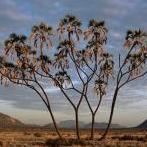
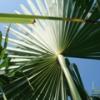
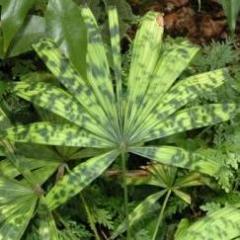

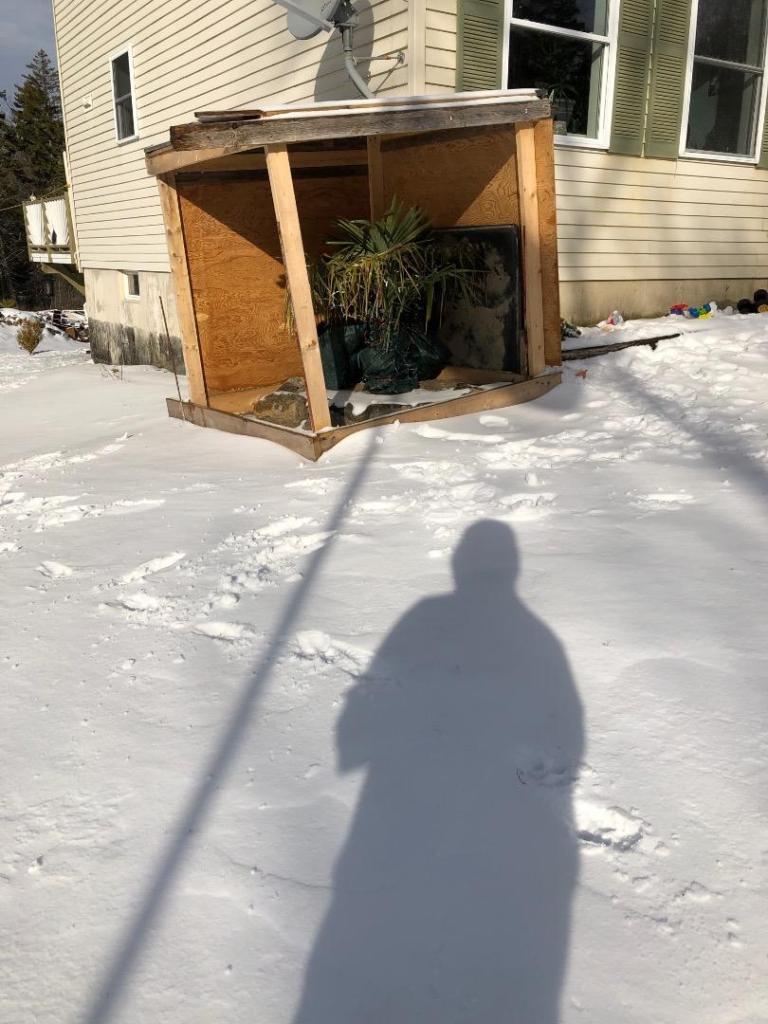

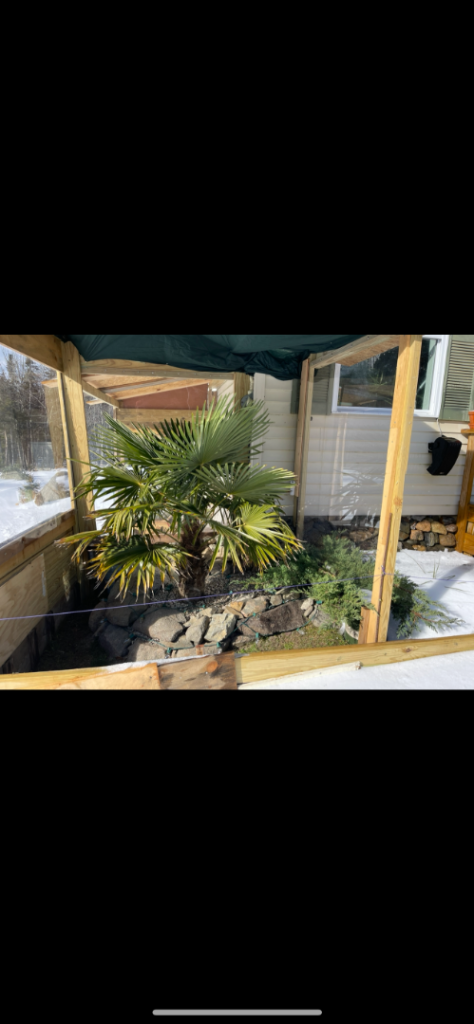


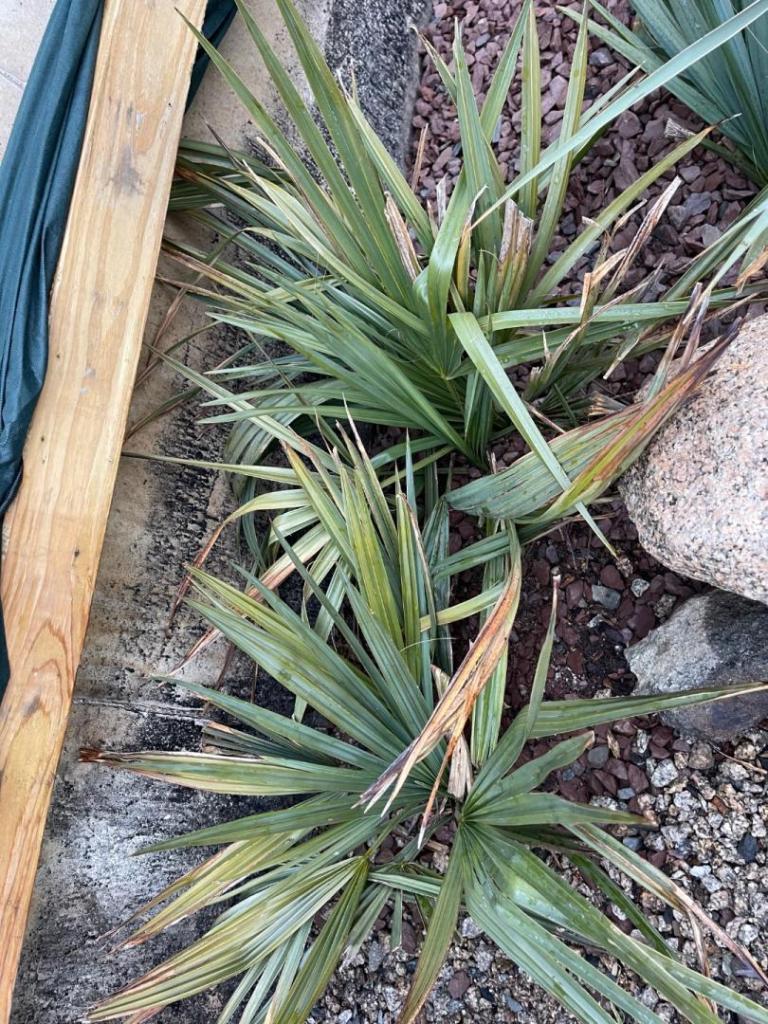

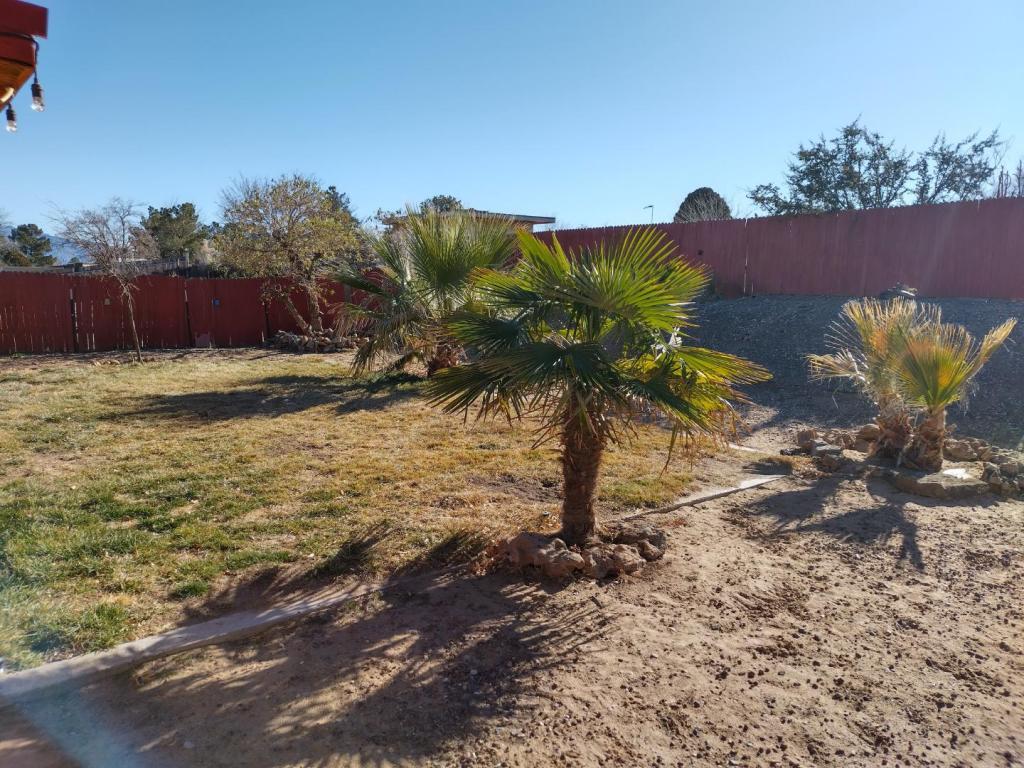






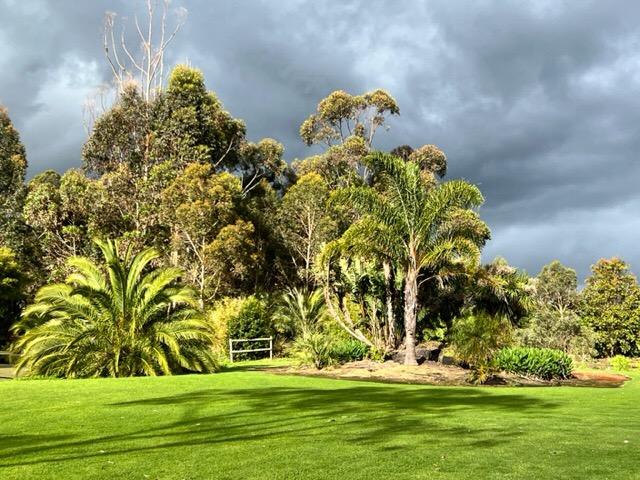


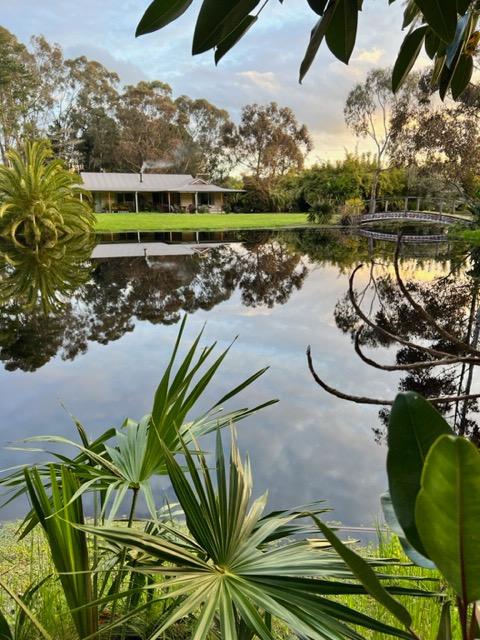
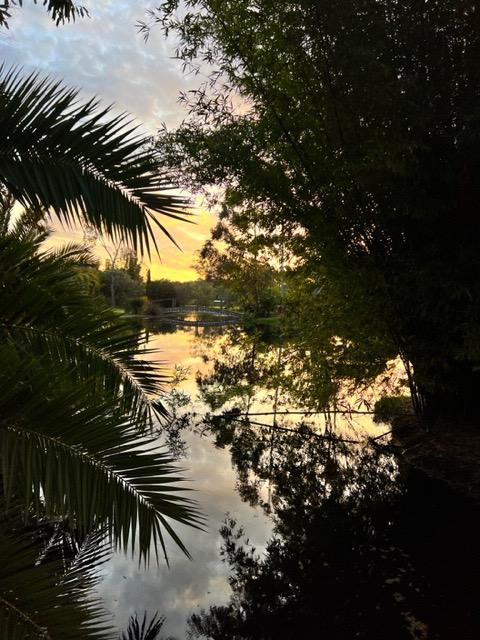







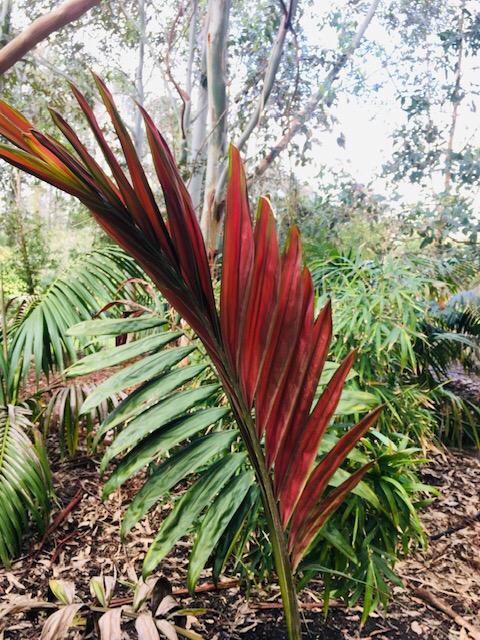



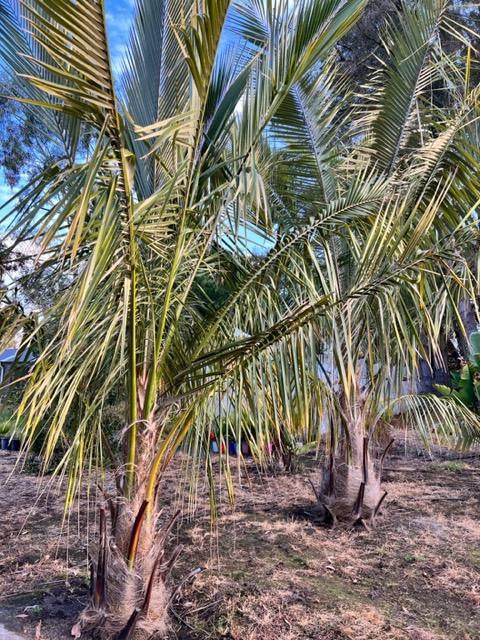

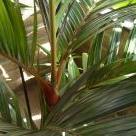
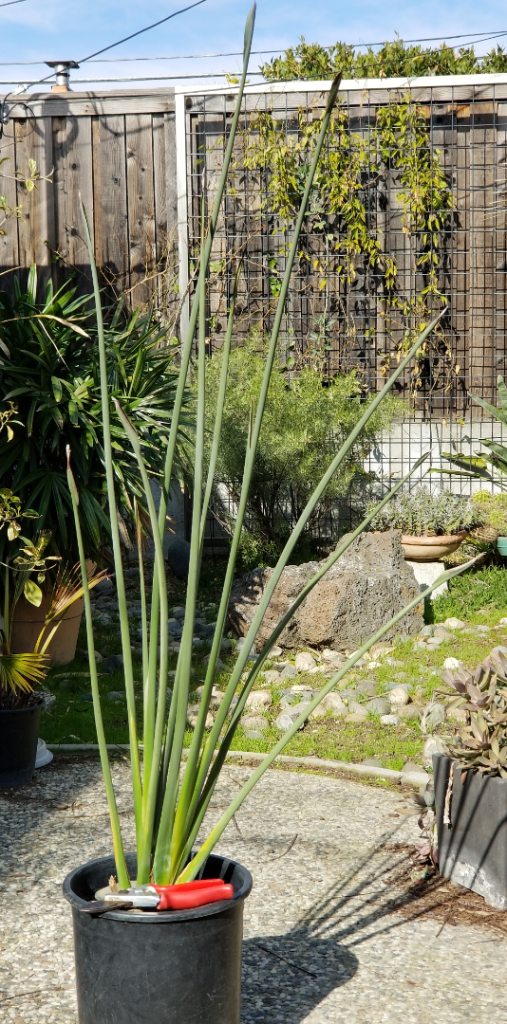
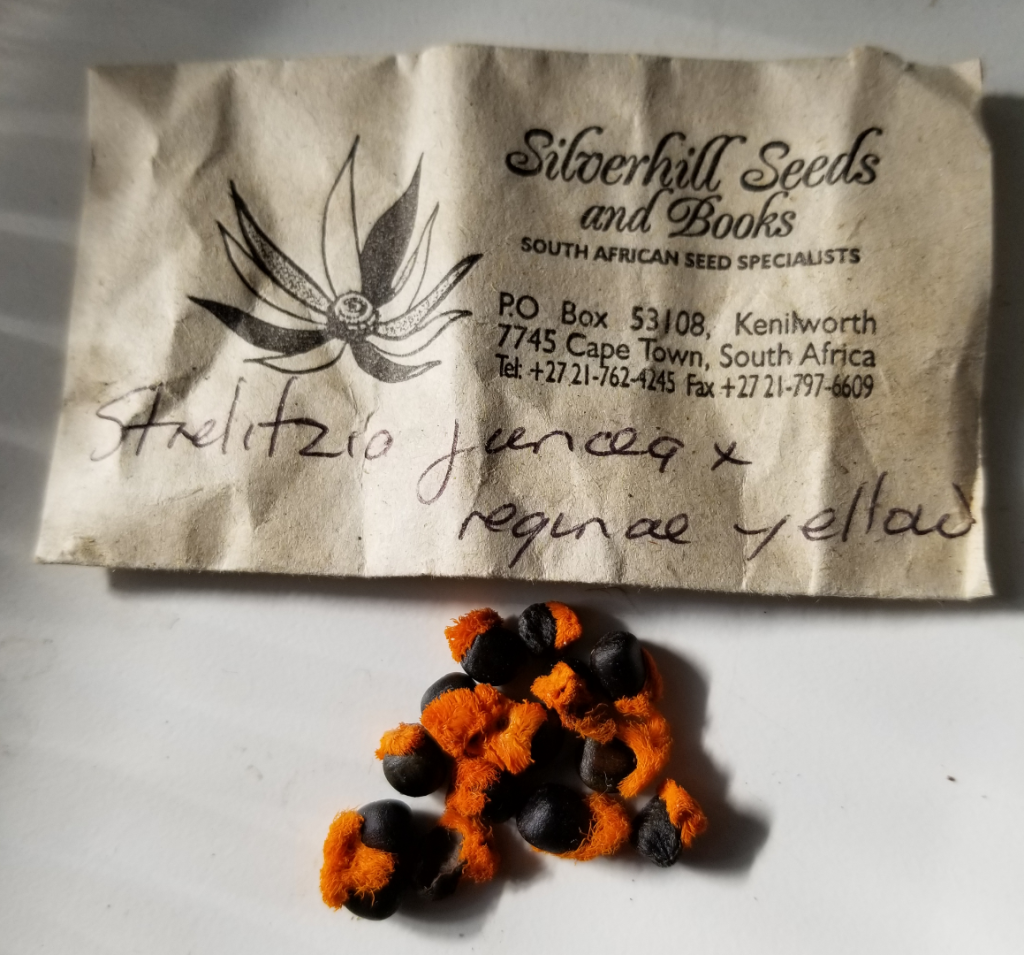



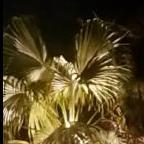


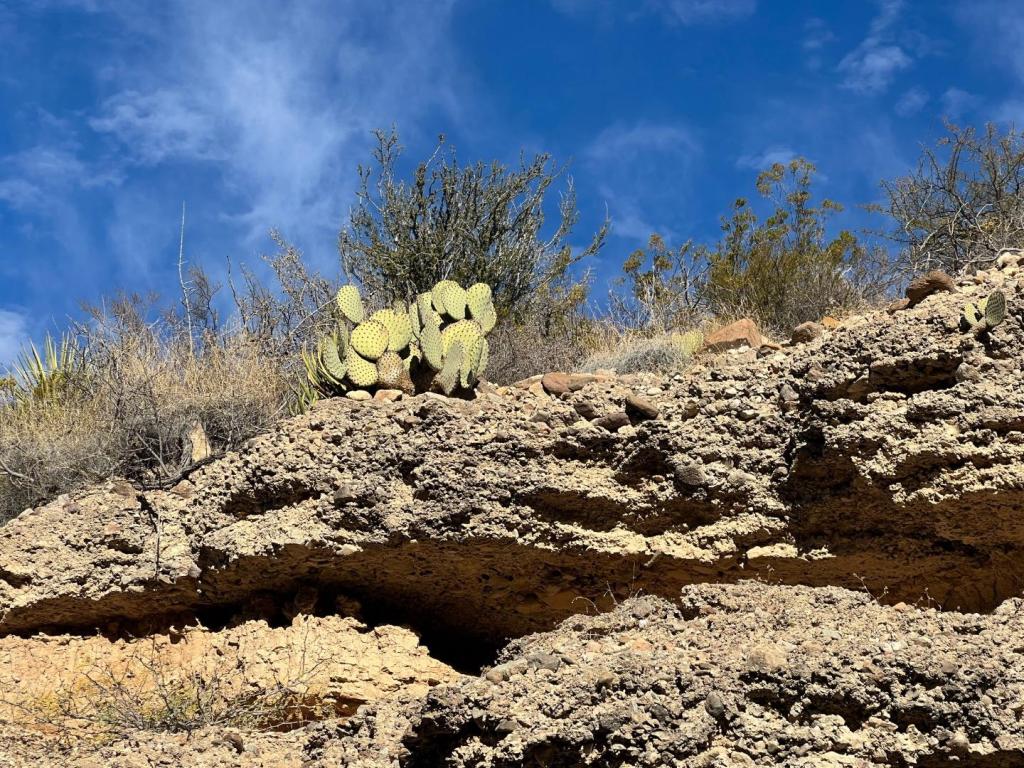


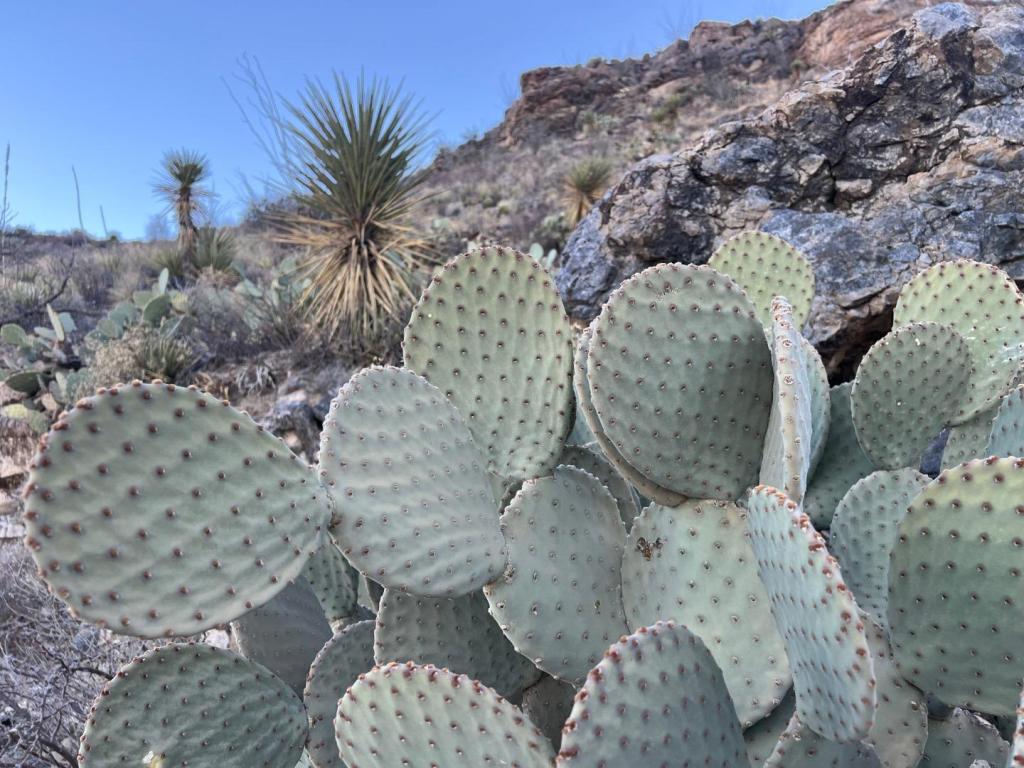
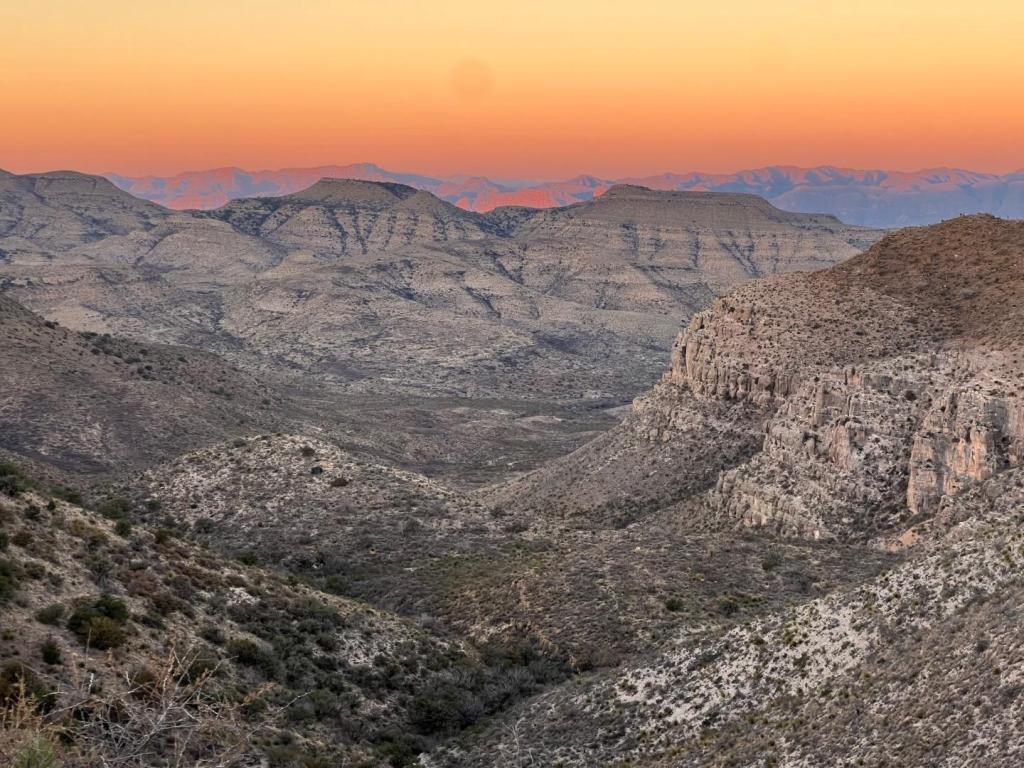




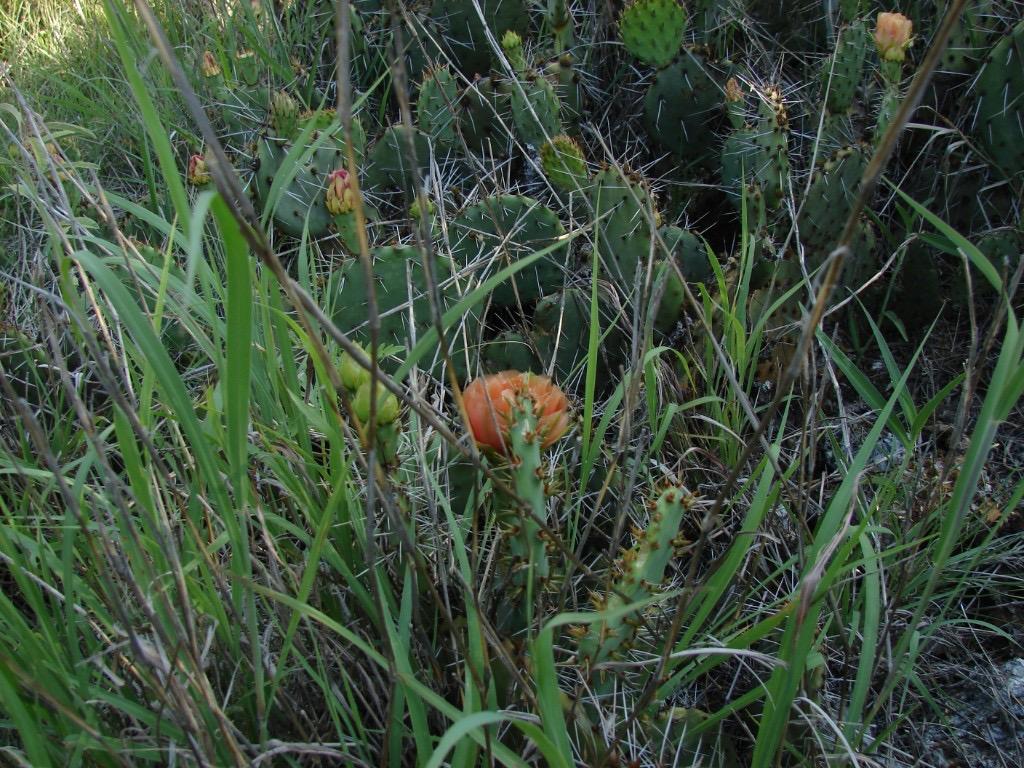

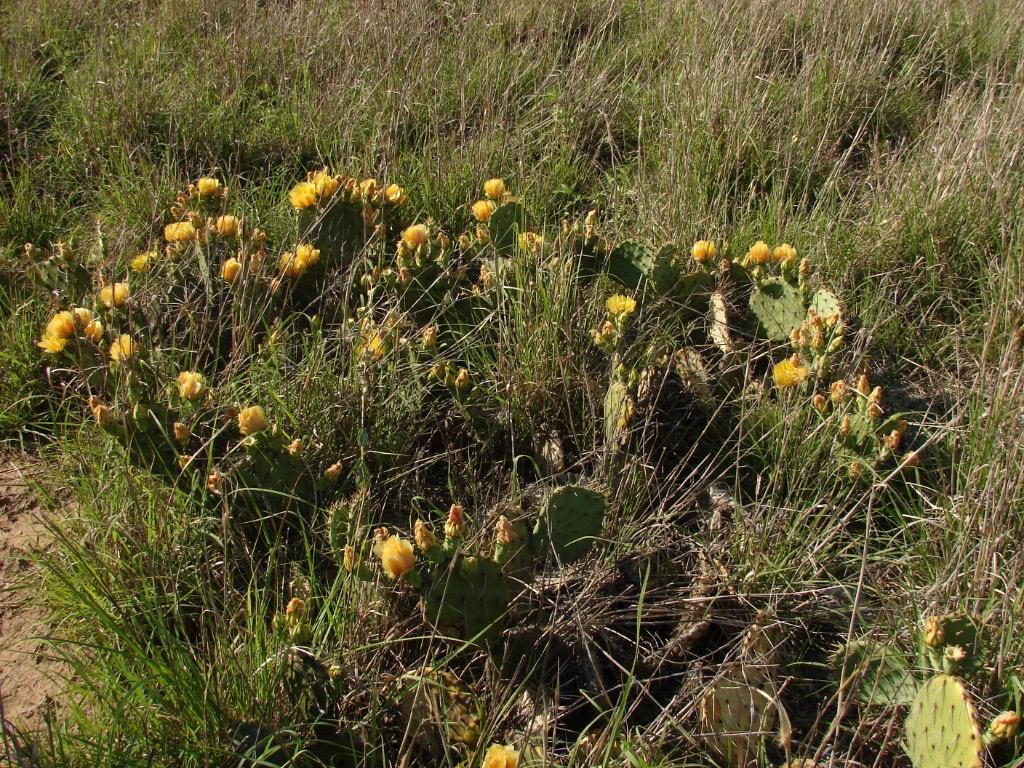
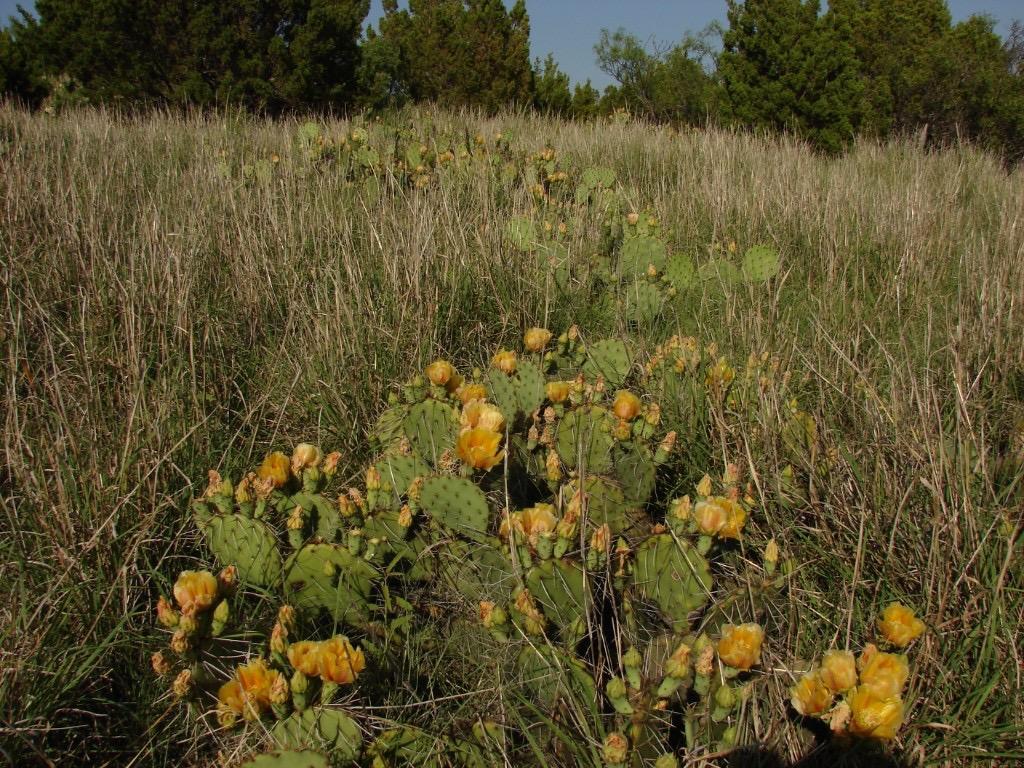
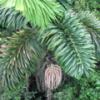
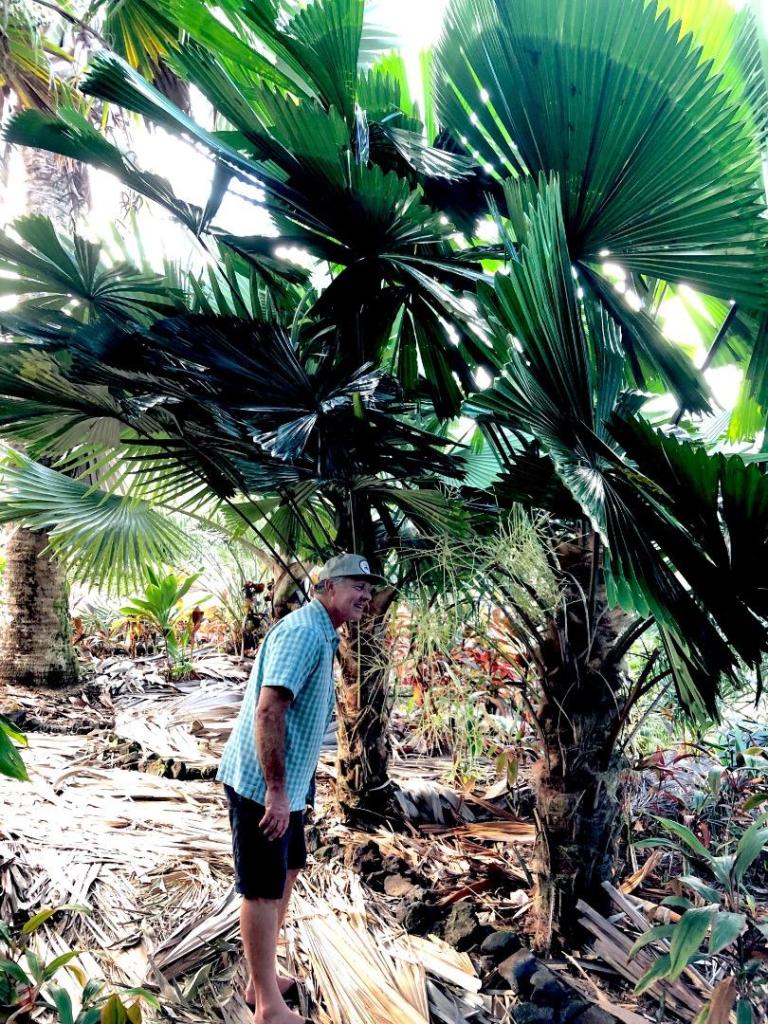
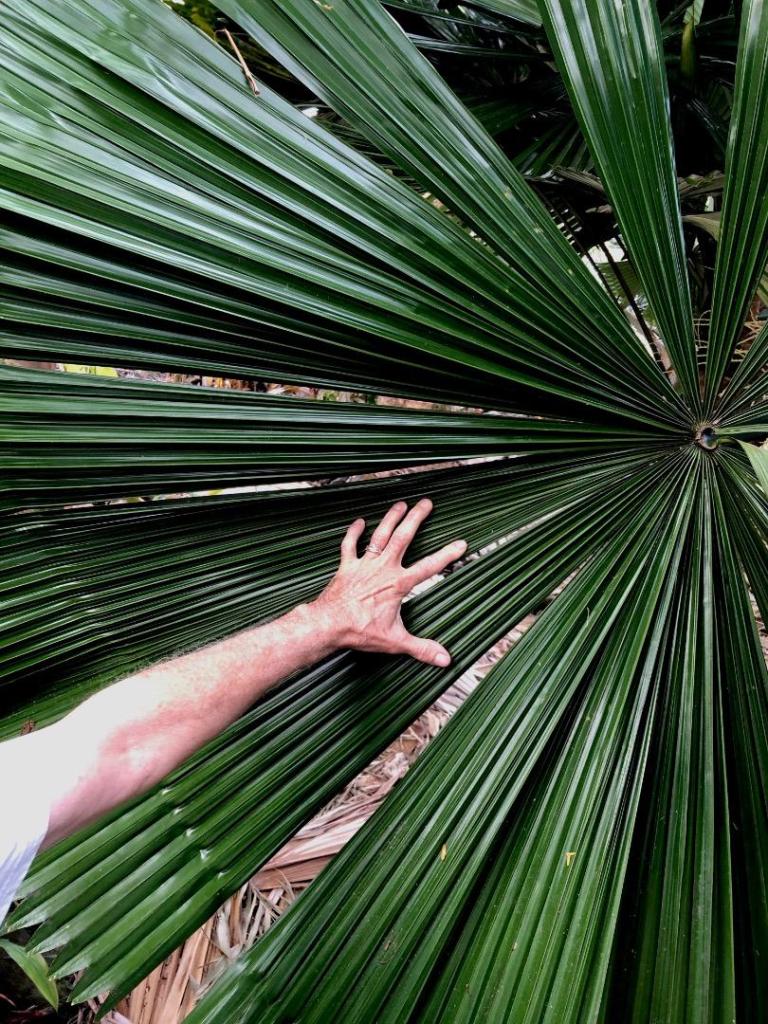

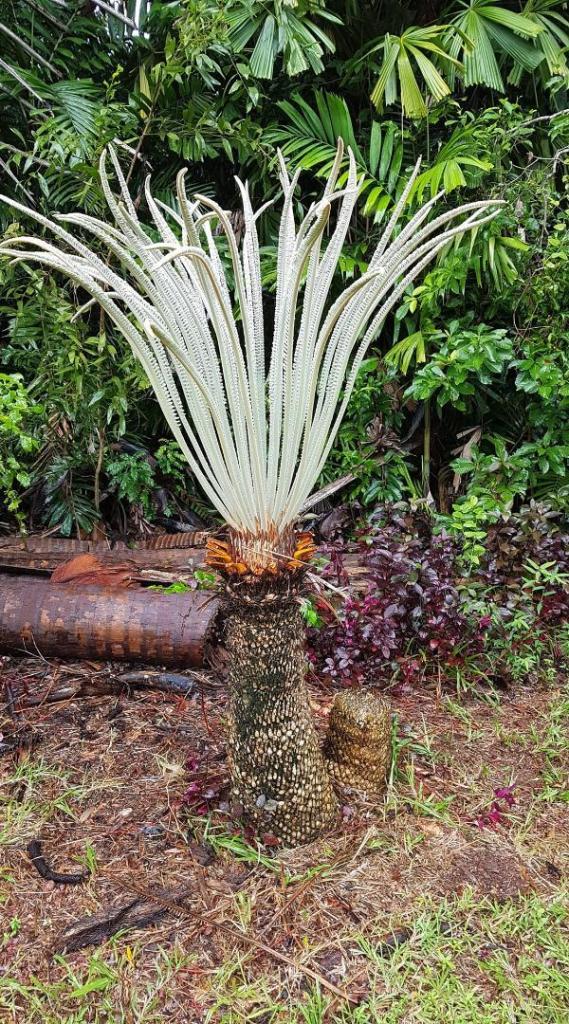
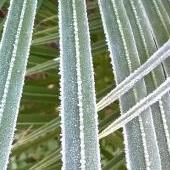

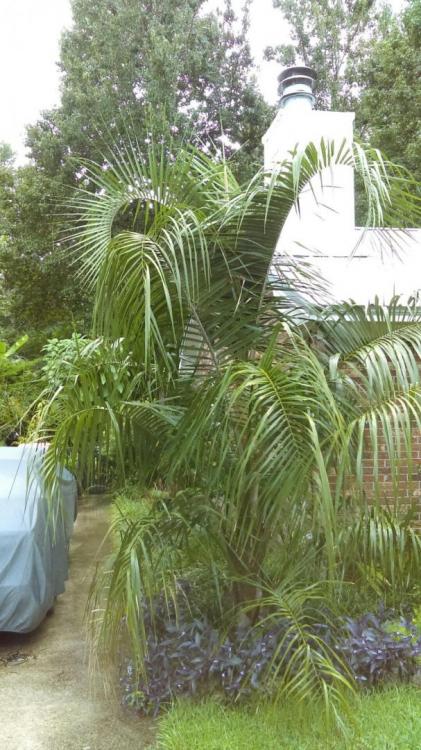
.thumb.jpg.36130af65be805a8fd02cc5a12f2259e.jpg)
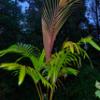
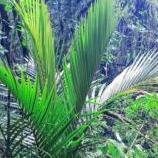
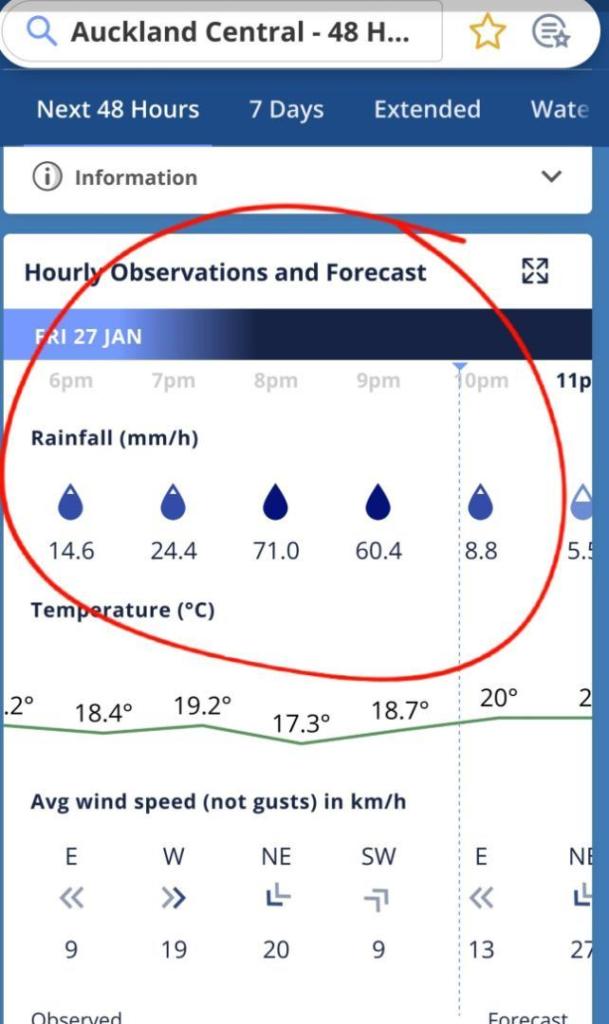
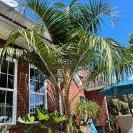
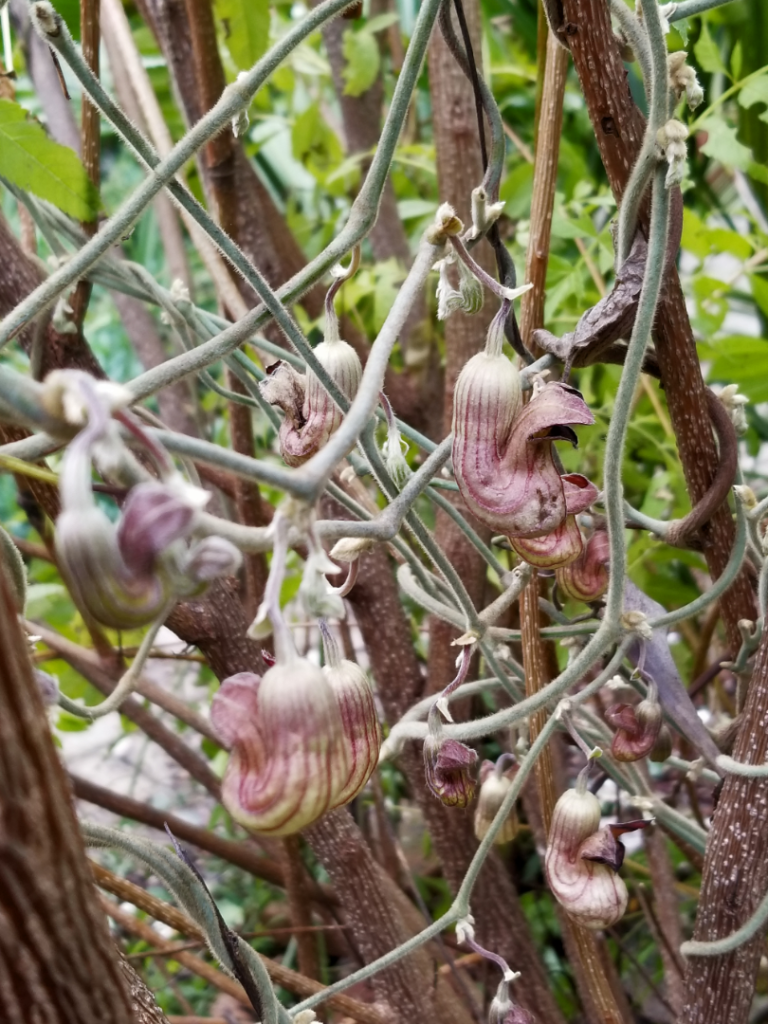

.thumb.jpg.f98e5066db1dec0358105c9c8eae8b39.jpg)



